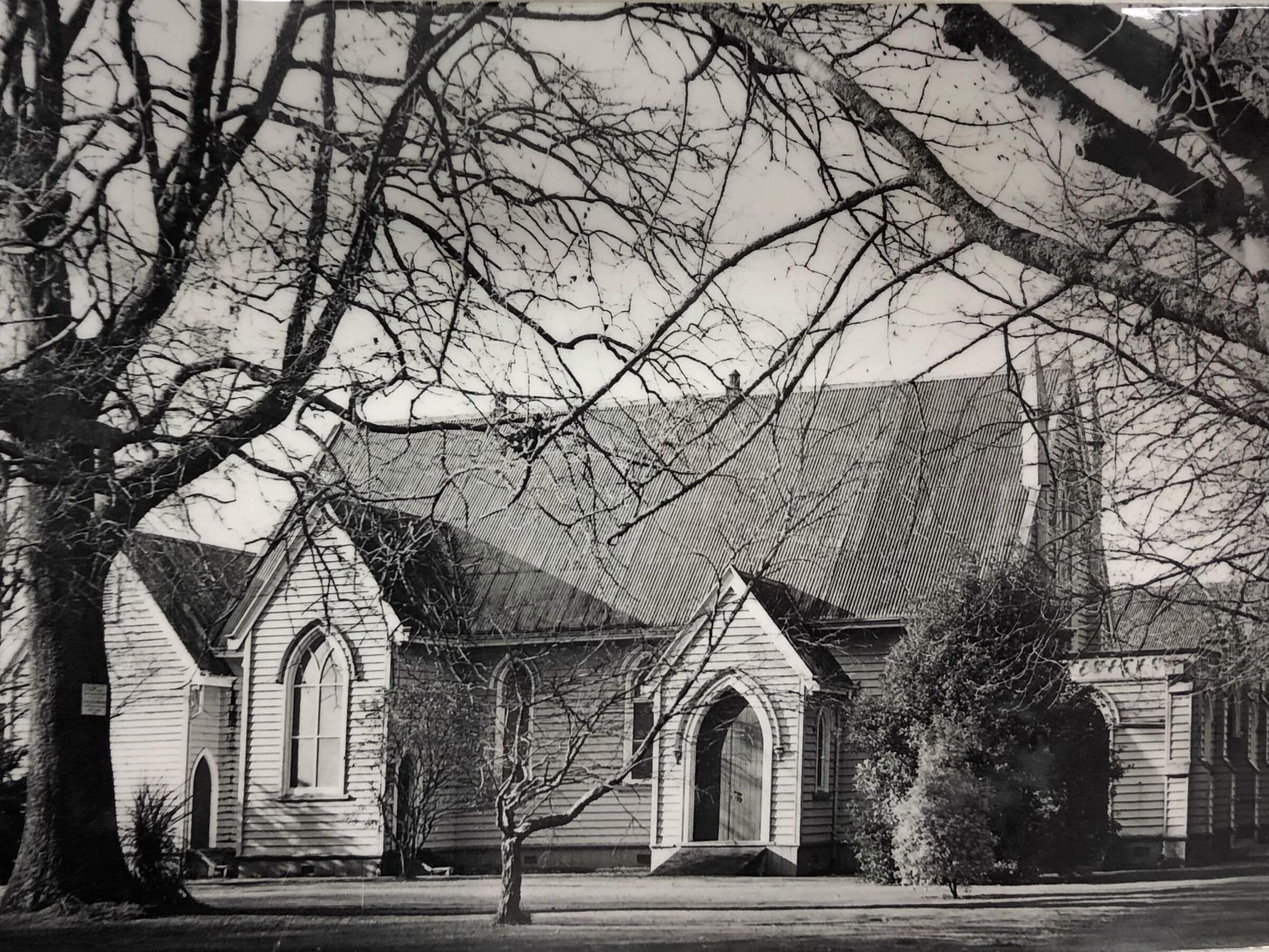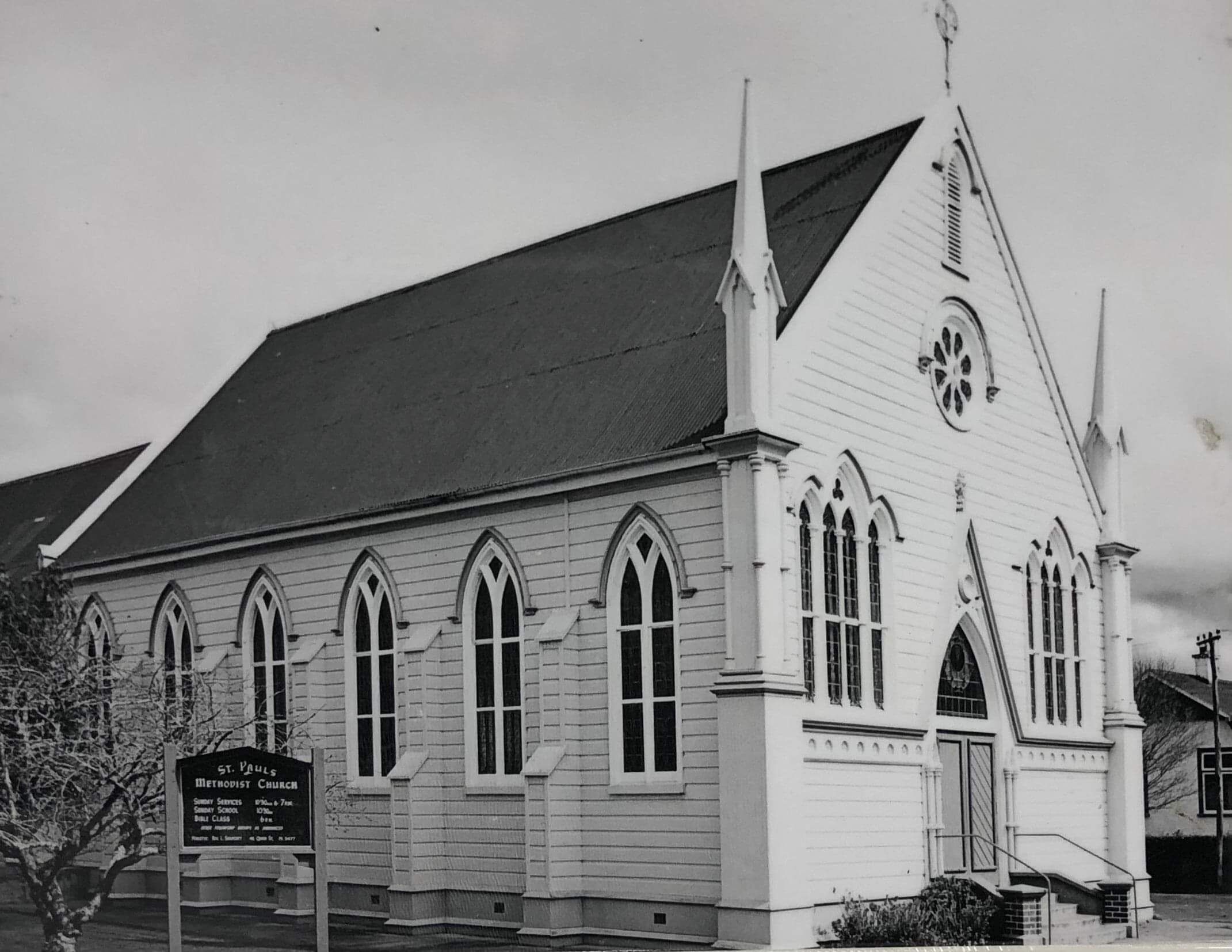History
In 2019 we celebrated 40 years of combined Christian fellowship with the union of the Methodist and Presbyterian churches of Cambridge. Both these churches have significant history in the district well written By: Mr TC Wallace “Trinity Presbyterian Church Cambridge – One Hundred Years 1872 – 1972 and “A Great Cloud of Witnesses” by Rev Leonard Shapcott a Centenary Celebration 1967.
Short excerpts have been taken from these two wonderful documents to give a little insight into the hard work and serious commitment of those early Christians in Cambridge and the wider area. I quote from Mr Wallace’s document “Through Government mishandling of a delicate situation, Maori went to war in defence of their land. It was in these troubled times that in 1863 the first Presbyterian minister officially visited the Waikato, when Rev Norrie considered it his duty to visit the troops that General Cameron had led across the recognised boundary line, a small creek near Mercer. The British Forces were to eventually defeat Rewi Maniapoto and his greatly outnumbered gallant band at the battle of Orakau in April 1864.
Rev T Norrie continued to service the Waikato at various times over the next 8 years until a permanent minister Rev Thomas Stewart, was inducted in the Wilson Street school room on September 29th 1872. although due to health issues Rev Stewart returned to Scotland some 3 years later.
This was the beginning of Trinity Presbyterian Church and there continued to be a great variety of ministers looking after the small congregation. But it grew and after sharing facilities with the Anglican church for some years the first church was built on Alpha Street around 1877. In 1898 the Trinity Church we recognise on Victoria Street was built.

The growing population included many farming folk and in early days they often walked for miles, rode horses, crossed the river or drove a horse and gig to get to church. Evening events were, for many years, organised on the nights of full moon to aid people in finding their way to the function in horse and buggies on the dark rough roads. Church activities were the main social events in the district and families were conscientious in their hard work for the local church as well as overseas missionary work.
In 1960 there were 600 communicant members of Trinity Church.
Meanwhile the Methodist Waikato Circuit was taking shape and covered an enormous area from Ngaruawahia to Kihikihi including Cambridge, Fencourt and Hamilton and even to the West Coast. Over many years the ministers of the time travelled far and wide in rough conditions, often staying overnight with various parishioners. In 1867 3 acres were purchased on the corner of Bryce and Queen Streets where a parsonage was built and after some years, a grand opening of the church took place on the 5th March 1884 with a ½ day holiday for the town and a large gathering flowing into the adjoining hall.
There were frequent church meetings and activities for the youth, especially for young men. A gymnasium was built and well utilised for physical events as well as chess, draughts etc . The Methodist Circuit included Pukerimu (Church built in 1871) Fencourt/Hautapu and even for a while Otorohanga in the King Country until a Home Missionary was appointed to this area. The Primitive Methodists were active as well and in 1907 built a church in Fencourt/Hautapu. They held services at the TB Sanatorium up Maungakawa for a while. Eventually they became united with the Methodist church as one. In 1912 some of the previously purchased land on Queen Street was sold and a new parsonage was built. Around the turn of the century, a parishioner gifted some property at Kaipaki and the Pukerimu Church which had diminished in attendance, was shifted by traction engine to its present site.

During both wars, the people of the church worked extra hard to sustain people in their faith. The women were busy with the Women’s Christian Temperance Union and went on to do many good works during the two world wars. The Rolls of Honour from the Presbyterian Peace Hall are now mounted on the outside wall facing Queen Street. In 1946 the Sunday School roll was 170 and by 1953 it was 215 with Mrs R Sutherland directing the Sunday School Choir.
In 1970 there had already been some discussion around combining the Methodist and Presbyterian churches. Then on June 28th the Methodist Church was burnt down by an act of arson.
So discussions continued and at the joint Christmas Service in 1970 there was an Act of Commitment
“We offer to God our utmost endeavours that by the Holy Spirit we may be brought into one church according to His will to the Glory of God the Father” Then to each other, together. “With the obediences we offer, we acknowledge our obligations to receive new insights and now do together, things which in the past we have done separately.”
The Methodist Church St Pauls needed to build a new centre even though they had been welcomed into the Presbyterian Church for shared worship following the fire. The Trinity church was aware there was worked required on the roof and with the main road so close, there were parking and safety issues becoming more pressing.
There were many years of hard work and negotiations between the people of both congregations. For some, it was a huge wrench to leave the church that held such strong memories around children’s Baptisms, family weddings, and funerals of loved ones. There were many decisions to be made which included both the building architecture and the future worship protocol to be shared. So many meetings continued to take place over the years.
There are some special aspects of this Union Parish building such as the light fittings made from the wood of the pews from Trinity Church (many pews were bought by parishioners), the lovely ceiling of kahikatea, the very special stain glass window designed to express the story of the uniting Methodist and Presbyterian parishes.
Today we are a mixed congregation of different denominations but happily worshiping together and we give thanks for the amazing forethought of those many folk who made this happen.


